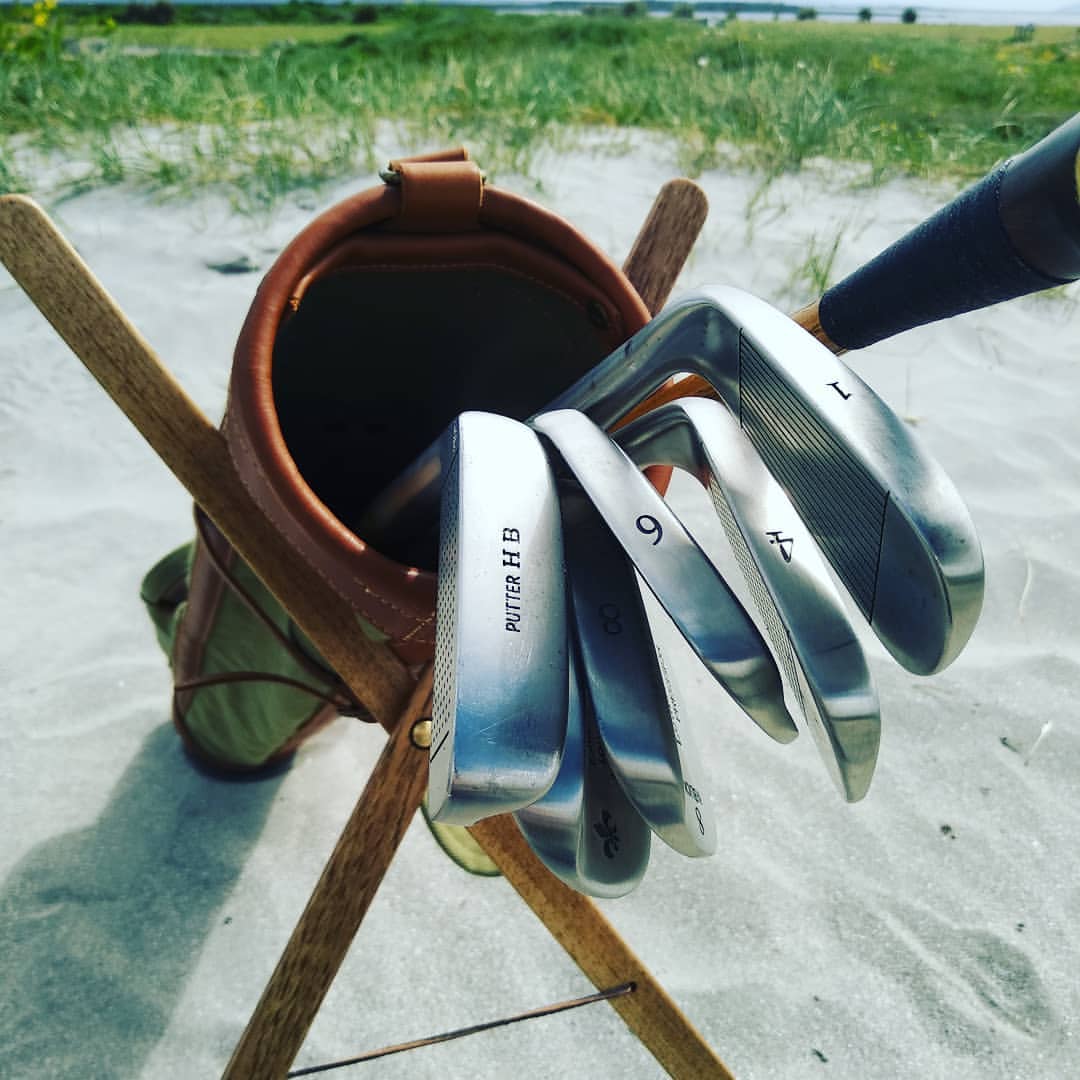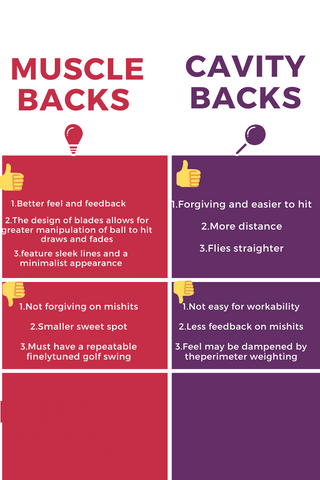I am often asked the following questions on social media:

A topic that's long been the talk of the town in the golf world: “What are the pros and cons of blades and irons, and who should use each?”As we know, There are blades or muscle back irons, cavity back irons, game improvement irons, super game improvement irons, and player’s distance irons. However, Blades are known as muscle-backs; Most modern irons are cavity-backs. So today, I'd like to dive into a discussion about How to choose between Blades and Cavity Back Irons.
Blades vs. Cavity-Backs: Weighing the Pros and Cons
Blades (muscle backs):
Blades were the only type of golf iron available before cavity backs were introduced in the 1980s. They were originally forged from single pieces of metal.
Blades are traditionally designed with a full back of the club head being smooth and flat. They are usually made from a solid piece of metal and have a very thin face and a compact hitting area. Blades are aimed at providing more feel and control for skilled players who can consistently hit the sweet spot.
Pros:
Better feel and feedback : Giving the golfer a better awareness of the club head's position; providing immediate and detailed feedback on the quality of the strike;
workability : The design of blades allows for greater manipulation of the ball to hit draws and fades
Aesthetics : Features sleek lines and a minimalist appearance.
Cons:
Forgiveness : Blades are less forgiving on off-center hits. Mis-hits can result in a significant loss of distance and accuracy.
Difficulty : Due to their design, blades are generally harder to hit than cavity-back irons. They require a high level of skill and precision, making them less suitable for average or beginner golfers.Versatility : Blades can be less versatile in different playing conditions, particularly for those who do not strike the ball consistently.
Demanding : Playing with blades demands a golfer to have a consistently good swing and ball-striking ability. Any flaws in the swing are more likely to be punished.
Cavity Back Irons
You might think cavity back irons sound just about perfect, and in many ways, they are! But, there's a catch. With the weight distributed along the perimeter of the clubface, shaping shots like fades or draws becomes trickier. Lower handicappers often prefer players' irons for this reason, as they offer more control over shot shape. However, if you're like me and love nailing straight, high, and consistent shots, cavity backs are your go-to clubs. They're designed for smooth turf interaction thanks to their rounded sole and features like the speed pocket help the ball launch swiftly. Plus, manufacturers are continuously refining designs inspired by the original Ping models. And remember, you can always switch to blades later as you refine your swing!
Pros: They forgive mishits, add distance, and reduce slices and hooks. The broad sole also minimizes turf issues.
Cons: They’re less flexible for shot-making,provide less feedback on mishits, and the overall feel might not be as sharp due to the perimeter weighting and their cast construction.
Choosing the Right Irons: Blades or Cavity Backs?
If you're new to golf, play infrequently, or have a slower swing speed, consider cavity back irons. They're designed to make the game easier by offering forgiveness on mis-hits, which is crucial as you develop your skills. Golf is challenging enough; there's no need to struggle with blades that require near-perfect swings.
On the other hand, if you're an experienced player who hits consistently and plays competitively, blades might be the better choice. They offer superior distance control, workability, and a heightened feel, rewarding your precision.
For a versatile approach, try a blended set. Combine cavity backs in your long irons for easier shot-making and trajectory control, and blades in your short irons for better feel and precision. This mix can provide the best of both worlds, allowing you to optimize performance across all types of shots.





